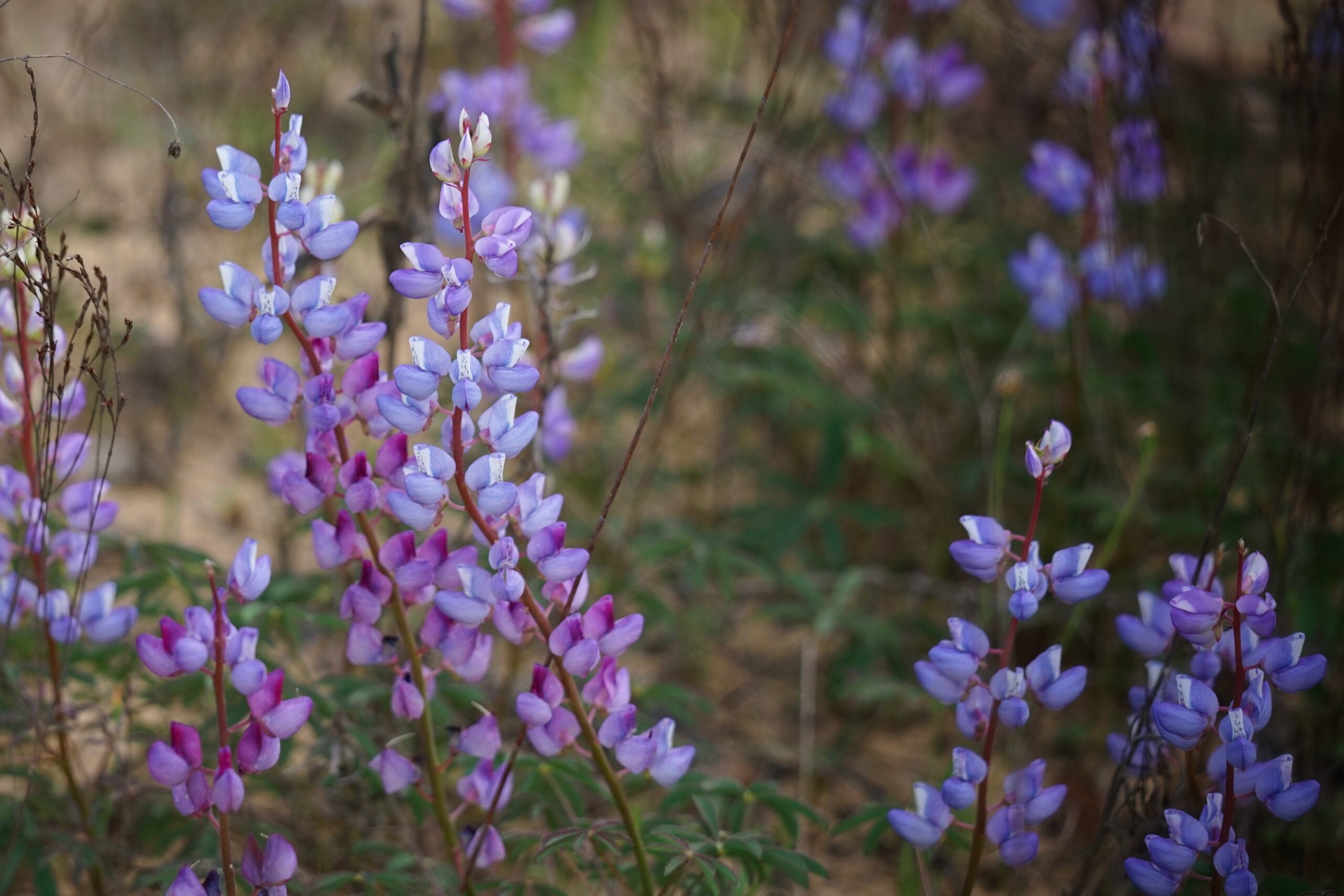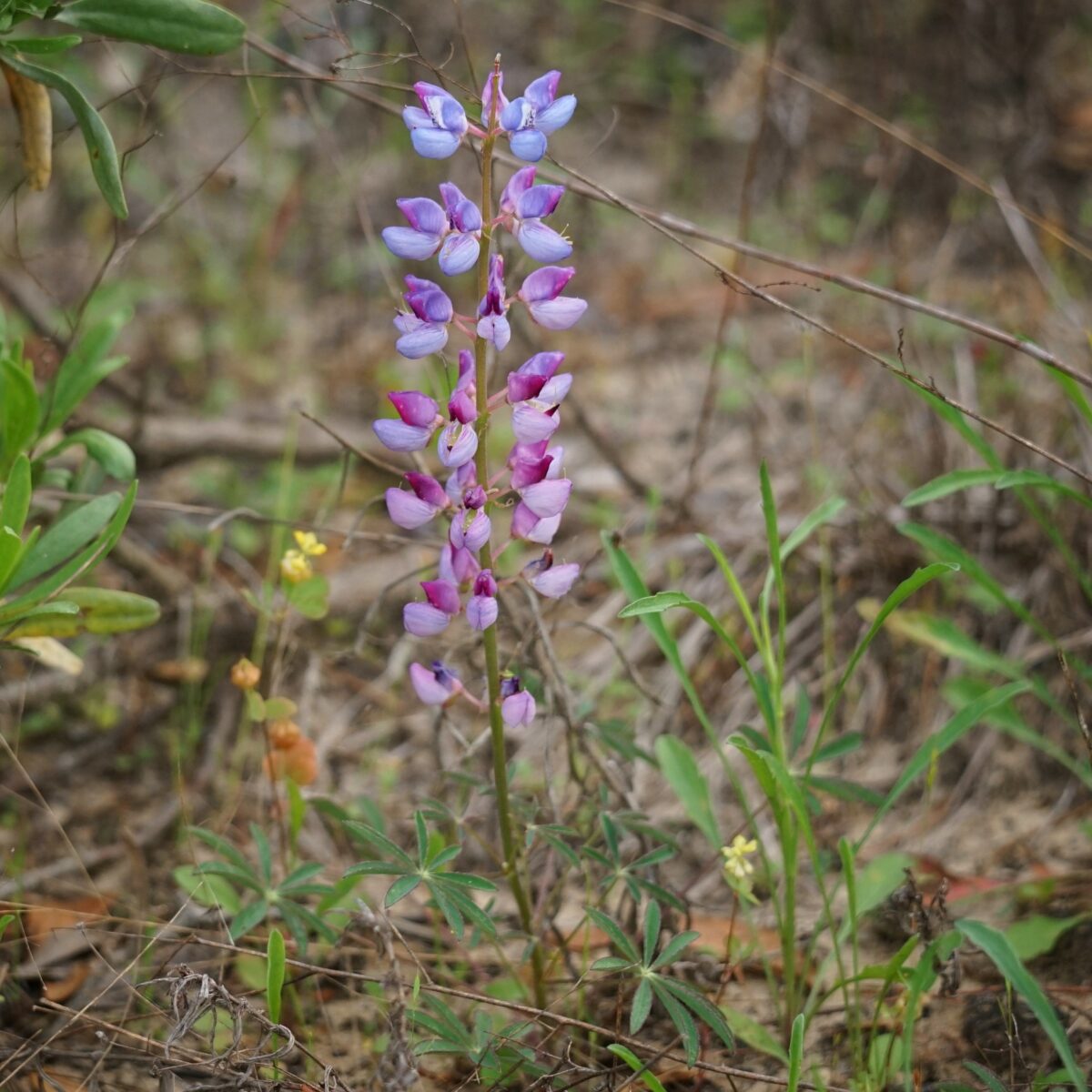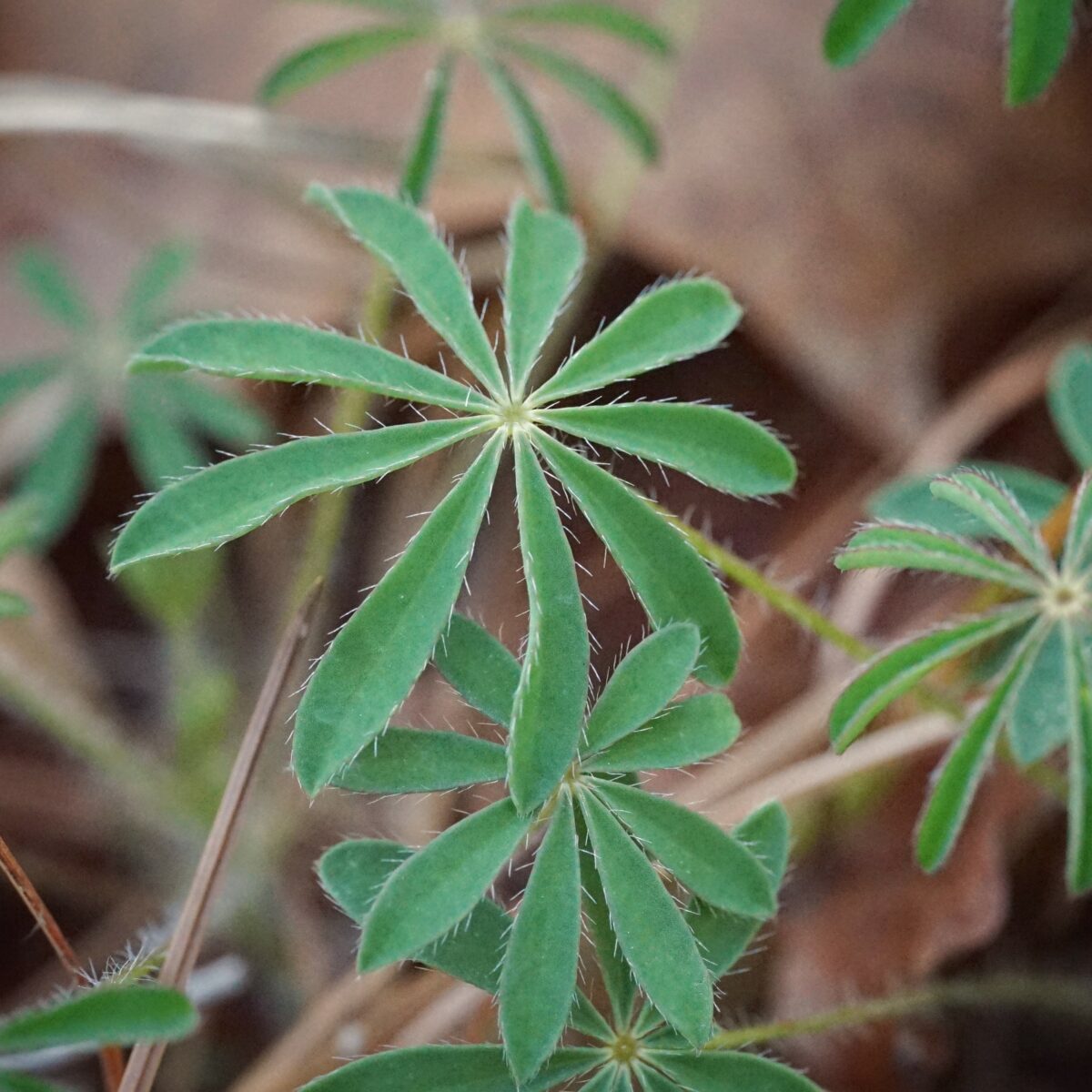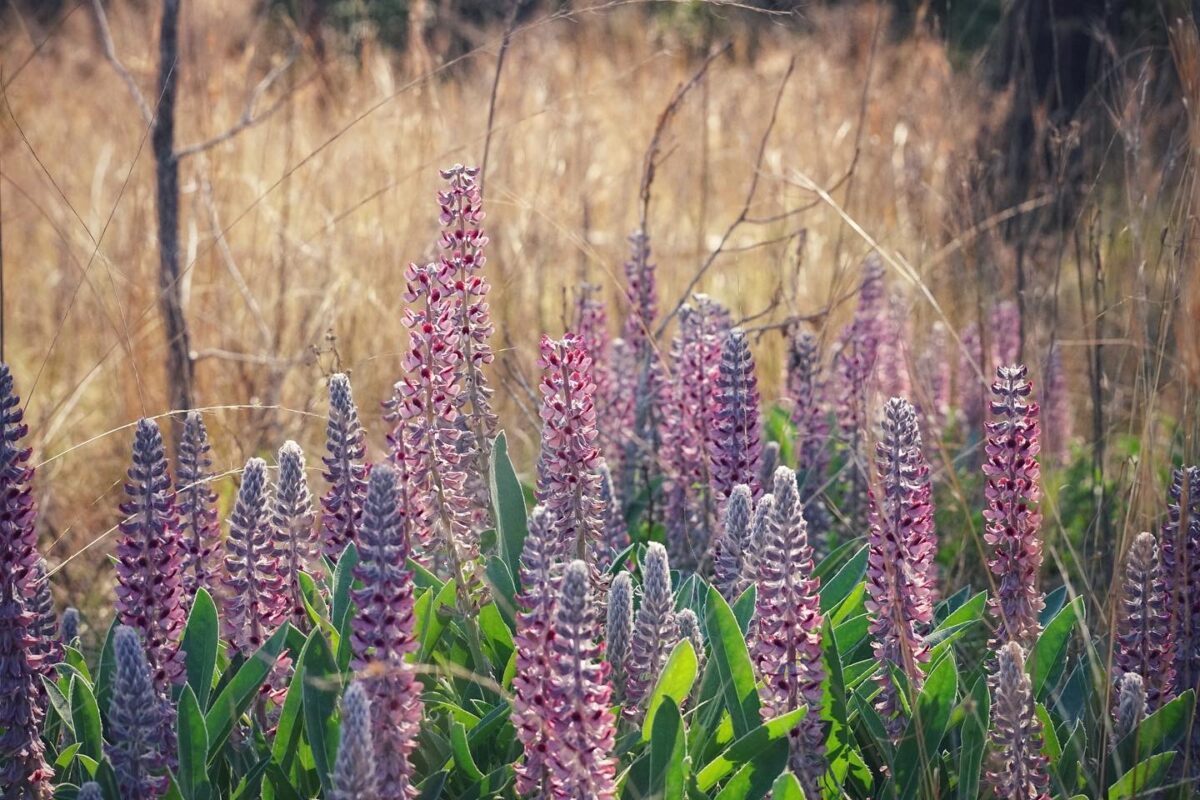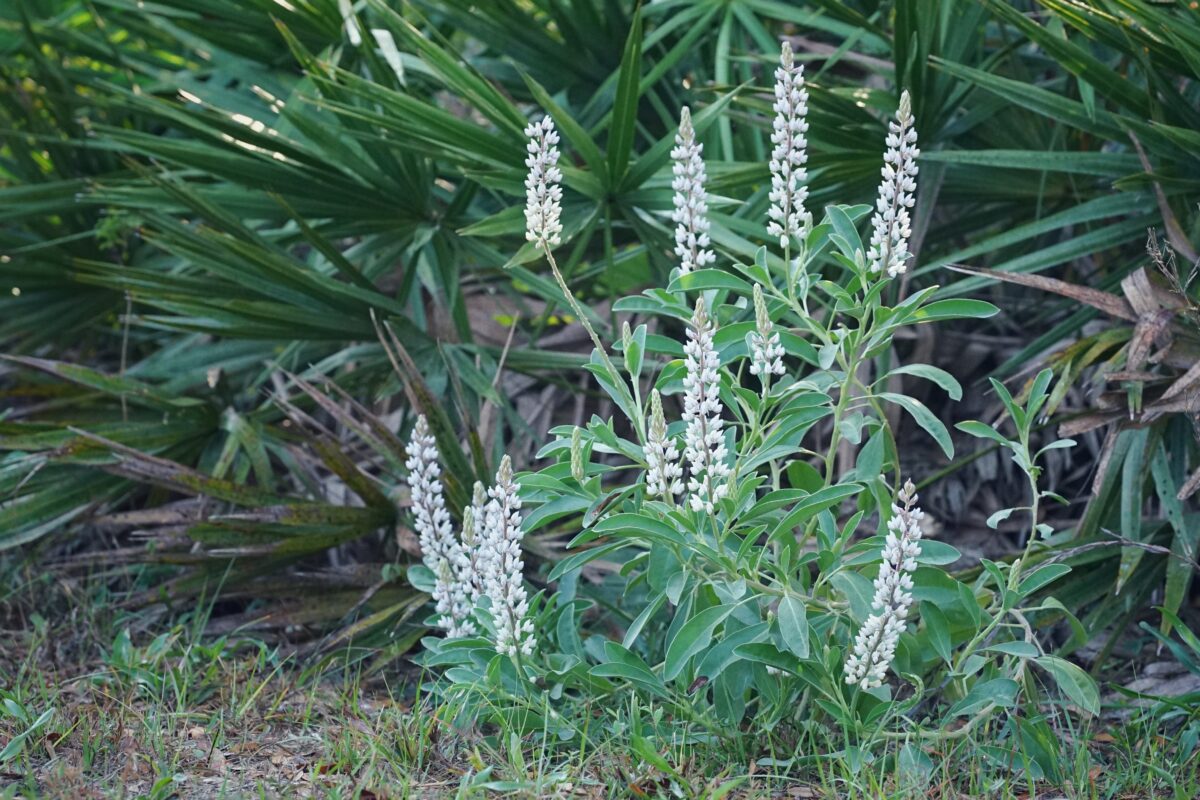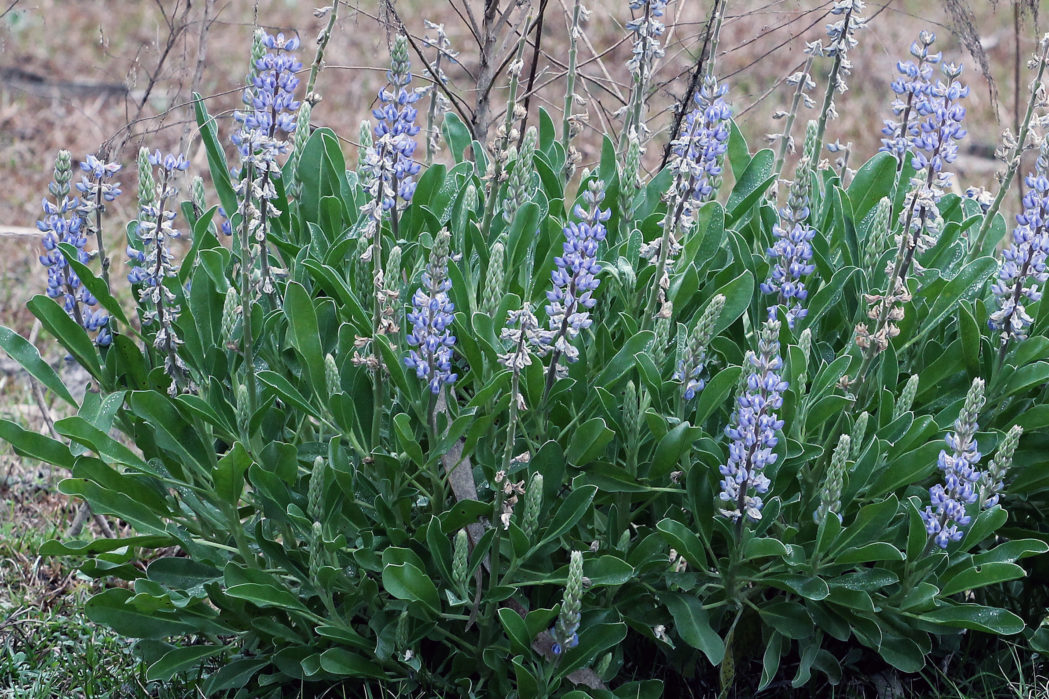Sundial lupine
Pictured above: Sundial lupine (Lupinus perennis) by Emily Bell. Click on terms for botanical definitions. View post as a PDF.
Of Florida’s four native Lupine species, the Sundial lupine (Lupinus perennis) has a unique style, from its ombré blooms that transition from light blue to violet purple to its palmately compound leaves. Found in sandhills and pine flatwoods, it has a wealth of wildlife value. Birds and small mammals consume the seeds, and its flowers attract hummingbirds and numerous bees and butterflies. The plant is also a larval host for the Frosted Elfin butterfly (Callophrys irus), whose populations are documented to be in decline.
The flowers are born in up to 8-inch spike-like clusters at the end of short stalks. Each individual flower is ¾ to 1 inch long and typically pea shaped. The broad upper petals have a thick white to purple or pinkish stripe with purple spots. The two lower petals are fused and have venation. The palmate leaves are divided into 7-11 2-inch long by ½-inch wide hairy leaflets radiating from a central point. Stems are also hairy but may become smooth with age. Seeds are born in fuzzy green pods that become black at maturity.
The genus name Lupinus stems from the Latin lupus, meaning “wolf,” and was attributed because the plants were once thought to rob the soil of nutrients. However, the opposite is actually true — as members of the Fabaceae family, they are nitrogen fixers and enrich the soil. The seeds and other parts of the plant are toxic to humans and some animals due to the presence of alkaloids including D-lupaine.
Family: Fabaceae (Legume, bean or pea family)
Native range: Panhandle, and northernmost Florida counties
To see where natural populations of Sundial lupine have been vouchered, visit florida.plantatlas.usf.edu.
Lifespan: Perennial
Soil: Dry, well-drained sand
Exposure: Full sun to part shade
Growth habit: Up to 2 feet
Sundial lupine plants are not commercially available. Visit a natural area to see them.
Learn more about Sundial lupine from the Florida Native Plant Society.
For information on other Lupinus species, see these resources:

